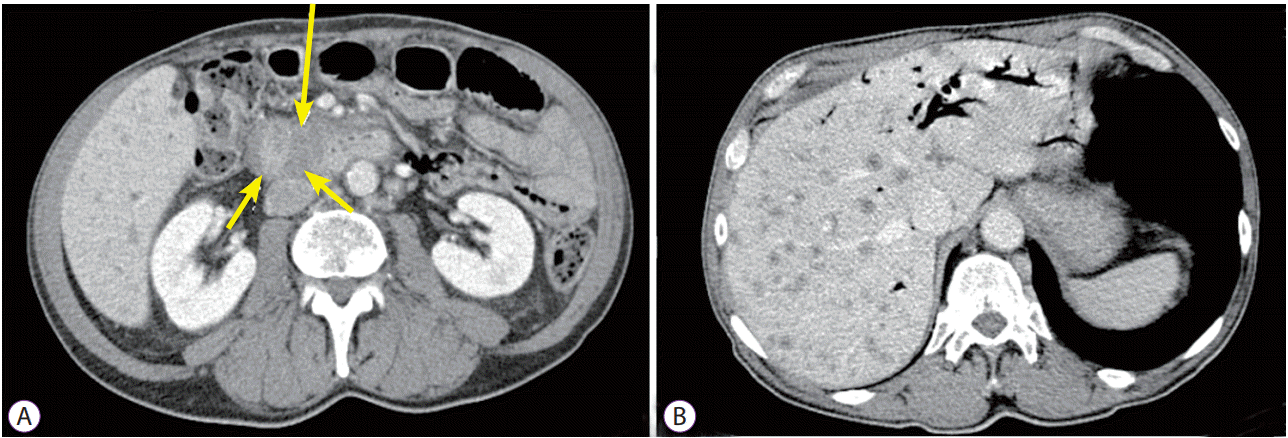A 71-year-old man presented with progressively worsening painless jaundice. Laboratory findings were significant for severe cholestasis (serum total bilirubin, 24 mg/dL; direct bilirubin, 22 mg/dL). Computed tomography of the abdomen revealed a 4-cm mass in the head of the pancreas with marked extra- and intra-hepatic biliary dilatation (Fig. 1A). Diffuse hepatic metastases and extensive metastatic retroperitoneal and left supraclavicular adenopathy were also noted (Fig. 1B). Endoscopic ultrasound (EUS) revealed a 32Ć28 mm hypoechoic heterogeneous solid mass in the head of the pancreas, causing complete obstruction of the common bile duct, with marked upstream ductal dilation (Fig. 2A). EUS-guided fine needle aspiration cytology revealed a poorly differentiated pancreatic adenocarcinoma. Endoscopic retrograde cholangiopancreatography for transpapillary biliary stenting was unsuccessful. Subsequently, EUS-guided choledochoduodenostomy using a 15ā10 mm, cautery-tipped, biflanged, fully covered, lumen-apposing metal stent (LAMS, Hot AXIOS; Boston Scientific, Marlborough, MA, USA), was performed resulting in the drainage of the colorless āwhiteā bile (Figs. 2B, 3, Video 1).
White bile is a colorless fluid devoid of pigments, bile salts, and cholesterol found in an occluded biliary system. Decolorization of the bile in an obstructed biliary system occurs because the biliary epithelium continues to secrete mucus in stagnant bile. As a result, the bile becomes increasingly lighter in color, and eventually, colorless. This can only occur when there is a loss of communication with the gallbladder, as in cholecystectomy, in an obstructed cystic duct, obstruction above the level of the cystic duct, or non-functioning gallbladder (gallbladder hydrops). On the contrary, if the obstructed biliary duct is in communication with a functioning gallbladder, this will result in a more concentrated bile of darker color, known as āblack bileā [1]. Patients with white bile have a predisposition to infection due to ineffective drainage and reduced antimicrobial activity. Furthermore, the finding of white bile in malignant jaundice has been associated with shorter survival than that in patients with green bile [2,3].









